Kalanchoe plants are charming, low-maintenance succulents loved for their thick, fleshy leaves and clusters of bright, long-lasting flowers that bloom in shades of red, pink, orange, yellow, and white. Native to the tropical and subtropical regions of Madagascar and Africa, Kalanchoes are drought-tolerant and thrive both indoors and outdoors in sunny, well-drained environments.
Though relatively easy to care for, one essential aspect of maintaining a healthy Kalanchoe is understanding how often to water it. Like most succulents, Kalanchoes store water in their leaves, making them susceptible to overwatering. Finding the right balance ensures a vibrant, thriving plant without risking root rot or dehydration.
In this comprehensive guide, we’ll explore how often you should water a Kalanchoe, the factors influencing its watering needs, signs of improper watering, and expert tips to help your Kalanchoe flourish.
Understanding the Natural Habitat of Kalanchoe
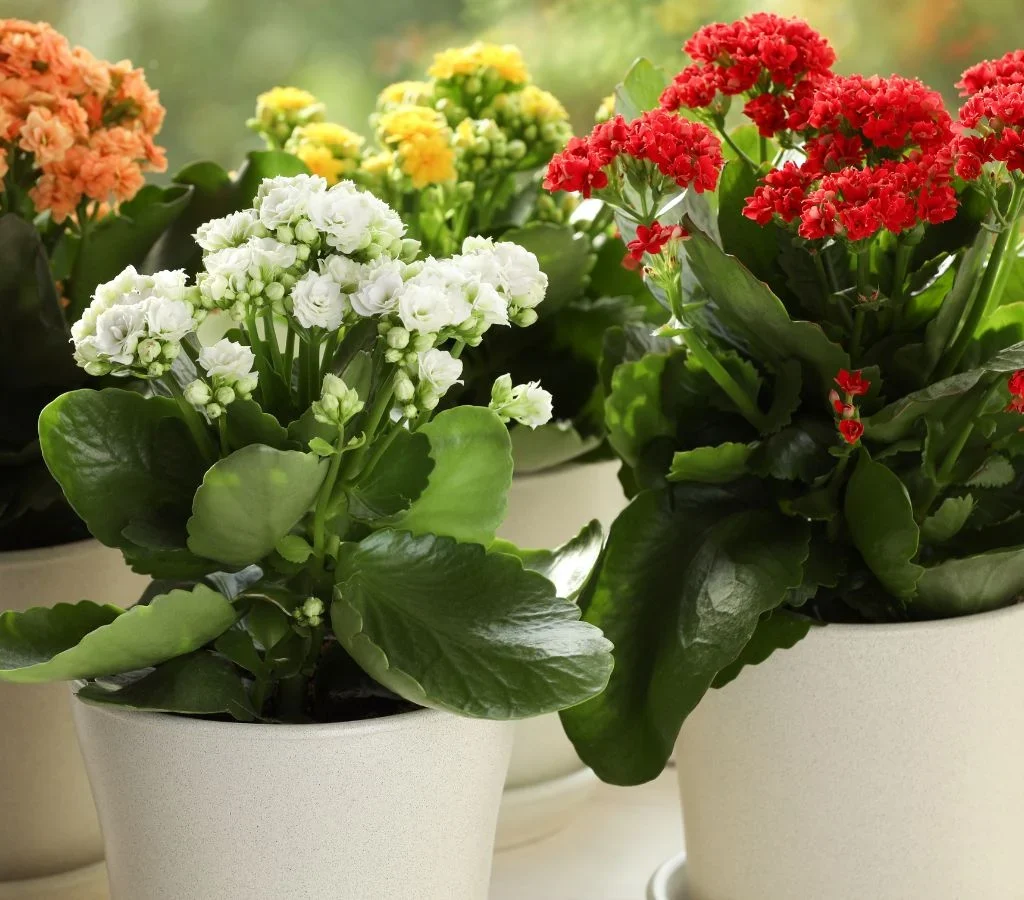
In their native habitat, Kalanchoes grow:
- In dry, rocky, and sandy regions
- In warm, sunny climates
- In well-draining, poor soils
- Enduring infrequent, sporadic rainfall
These natural conditions reveal that Kalanchoe plants prefer to dry out completely between waterings, making them ideal for drought-tolerant gardens and busy indoor plant enthusiasts.
How Often Should You Water a Kalanchoe?
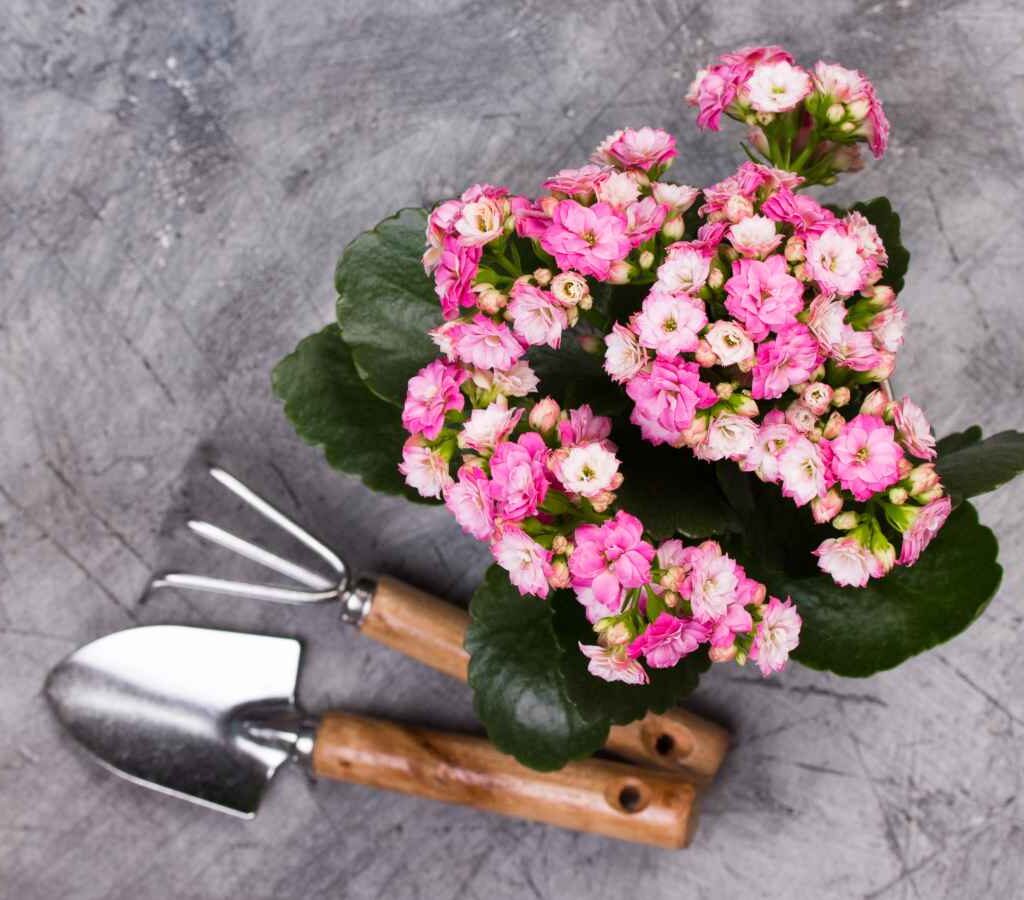
1. General Watering Schedule
As a general rule:
- Water every 10–14 days during the growing season (spring and summer).
- In fall and winter, reduce watering to every 3–4 weeks or when the soil is completely dry.
Key Rule:
Allow the soil to dry out thoroughly between waterings.
Kalanchoes are more tolerant of underwatering than overwatering. It’s always safer to err on the side of dryness than to risk soggy soil.
Factors Influencing Kalanchoe’s Watering Needs
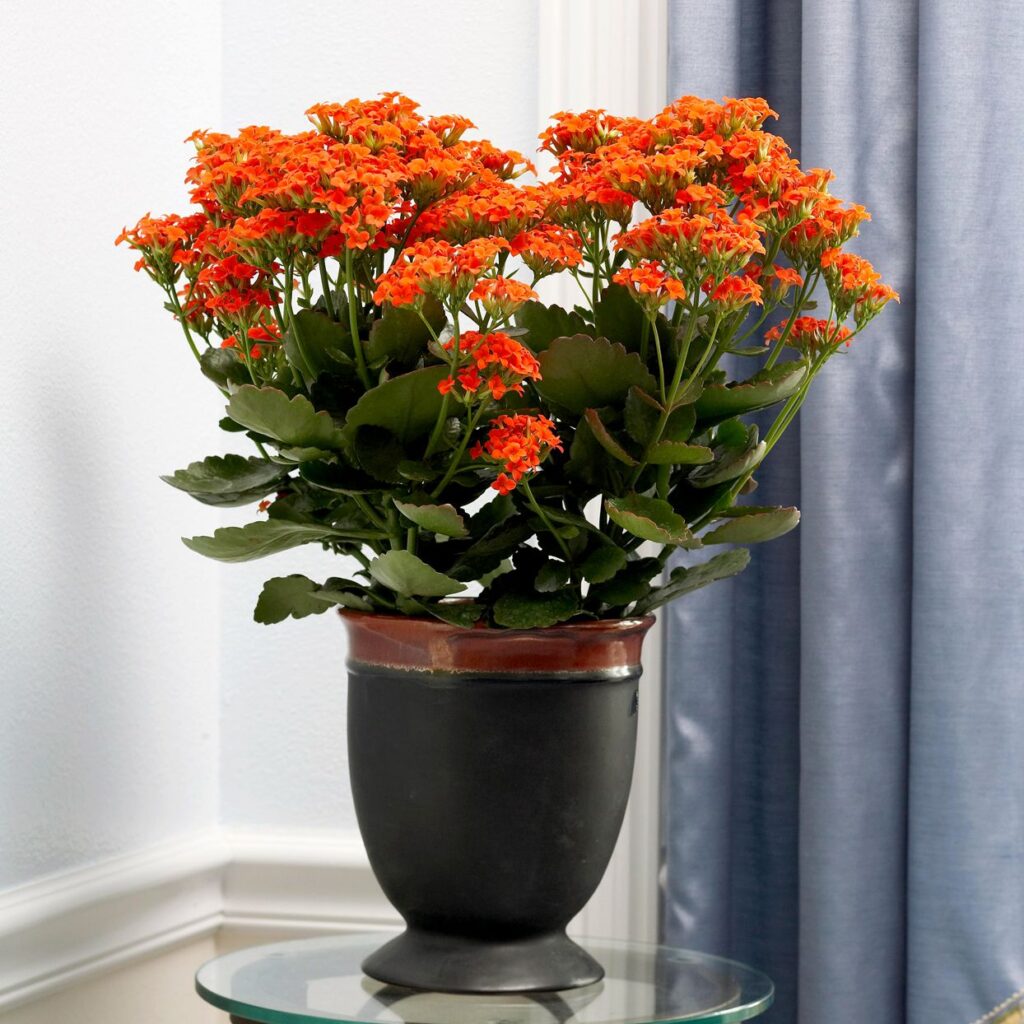
Several factors impact how frequently you should water your Kalanchoe:
1. Temperature and Season
- High temperatures (above 26°C/79°F) increase evaporation and plant activity, requiring slightly more frequent watering.
- Cooler temperatures (below 18°C/64°F) slow growth and reduce water needs.
Tip: In summer, check soil moisture more often, especially for outdoor or sun-exposed plants.
2. Humidity
Kalanchoes prefer low to moderate humidity (30–50%):
- In humid climates, soil retains moisture longer.
- In dry indoor air (especially with heating systems), soil dries out quicker.
Tip: Avoid misting Kalanchoes; their succulent leaves dislike excess surface moisture, which can lead to fungal issues.
3. Light Exposure
- Bright, direct sunlight boosts growth and water consumption.
- Low-light conditions slow photosynthesis and reduce water needs.
Tip: Kalanchoes in sunny window sills or outdoor locations may need watering every 7–10 days in summer.
4. Soil Type and Drainage
Kalanchoes demand well-draining, gritty soil. Ideal mixes include:
- Cactus and succulent potting mix
- Regular potting mix blended with perlite or coarse sand
Tip: Avoid dense, moisture-retentive soils, which can easily lead to root rot.
5. Pot Size and Material
- Smaller pots dry out faster than large containers.
- Terracotta pots evaporate moisture faster than plastic or ceramic pots due to their porous nature.
Tip: Always ensure pots have drainage holes to prevent water from pooling at the bottom.
How to Check Soil Moisture Before Watering
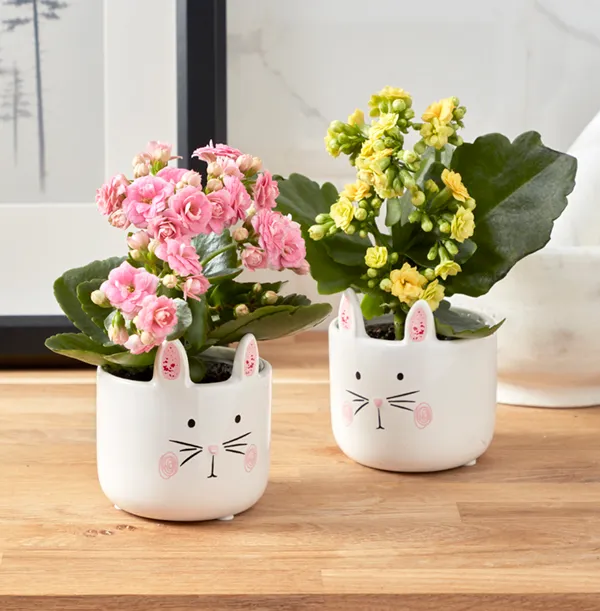
Never water on a fixed schedule without first assessing soil moisture. Here’s how to check:
1. Finger Test
Insert your finger 1–2 inches into the soil:
- If it feels bone dry, it’s time to water.
- If it’s still slightly moist, wait a few more days.
2. Moisture Meter
A reliable way to measure soil moisture precisely at the root zone.
3. Visual and Tactile Inspection
- Dry soil appears light-colored and crumbly.
- Moist soil is darker and clings to your finger.
Signs of Overwatering and Underwatering
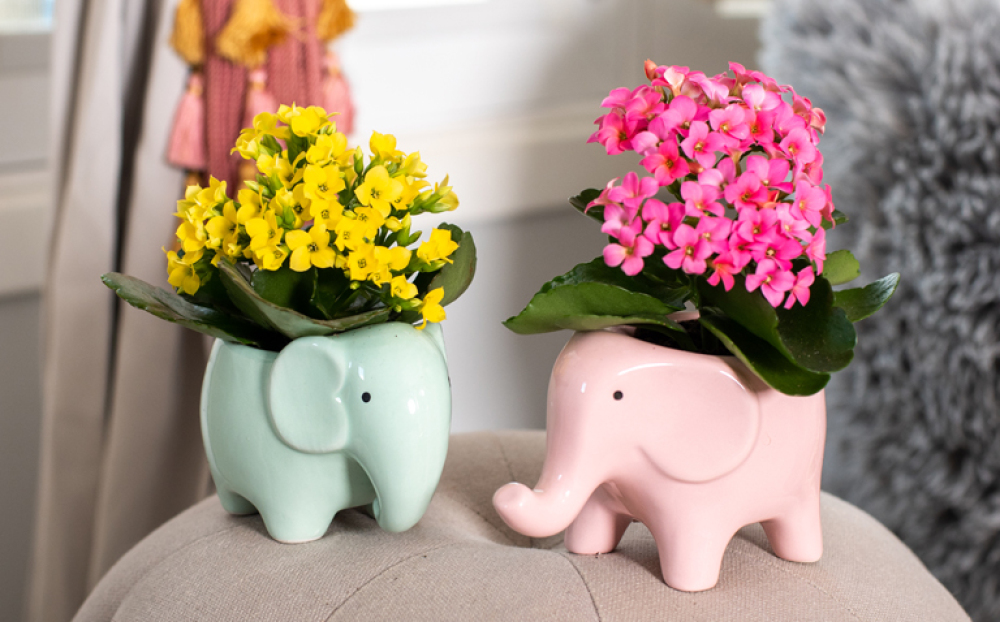
Recognizing early signs of watering mistakes can save your Kalanchoe from decline.
1. Signs of Overwatering
- Yellow, mushy leaves
- Wilting despite wet soil
- Blackened, rotten roots (if removed from the pot)
- Mold growth or a musty odor in the soil
Solution:
Stop watering, let the soil dry completely, trim off affected leaves, and repot in fresh, dry soil if necessary.
2. Signs of Underwatering
- Wrinkled, shriveled leaves
- Drooping, soft foliage
- Leaf drop
- Slow or stunted growth
Solution:
Water deeply until water drains out of the pot, and adjust your watering routine based on conditions.
Best Watering Techniques for Kalanchoe
1. Water Deeply but Infrequently
Water thoroughly until excess water flows from the drainage holes, then let the soil dry out completely before the next watering.
Tip: Avoid letting water sit in saucers beneath the pot.
2. Use Room-Temperature, Non-Chlorinated Water
Kalanchoes are sensitive to cold and chemical-treated water. Use:
- Rainwater
- Filtered water
- Tap water left out overnight
3. Water in the Morning
Watering early allows excess moisture to evaporate during the day, minimizing fungal risks.
Seasonal Watering Guidelines
| Season | Watering Frequency | Additional Tips |
|---|---|---|
| Spring/Summer | Every 10–14 days | Increase frequency in extreme heat or for sun-exposed plants |
| Autumn/Winter | Every 3–4 weeks | Reduce watering to mimic natural dormancy and prevent rot |
Common Watering Mistakes to Avoid
- Watering too frequently without checking soil moisture
- Using moisture-retentive soil mixes
- Allowing water to sit in saucers beneath pots
- Misting the foliage, encouraging fungal issues
- Watering lightly, which promotes shallow roots
Extra Care Tips for Thriving Kalanchoe
- Rotate the plant regularly to ensure even light exposure and balanced growth.
- Remove spent flowers and damaged leaves to promote new blooms.
- Feed lightly every 4–6 weeks during the growing season with a balanced, diluted liquid fertilizer.
- Repot every 1–2 years to refresh the soil and accommodate root growth.
- Place outdoors in summer (if temperatures allow) for increased sunlight and stronger flowering.
Conclusion
Kalanchoes are drought-tolerant, easy-care succulents that thrive when their water needs are met thoughtfully. While forgiving of occasional neglect, overwatering is one of the quickest ways to harm a Kalanchoe.
As a general rule, water your Kalanchoe every 10–14 days in spring and summer, and every 3–4 weeks in fall and winter. Always let the soil dry out completely between waterings, adjusting frequency based on temperature, humidity, and light exposure.
By observing your plant’s signals, using proper watering techniques, and providing suitable environmental conditions, you’ll enjoy a vibrant, blooming Kalanchoe that brings color and charm to your home or garden all year long.
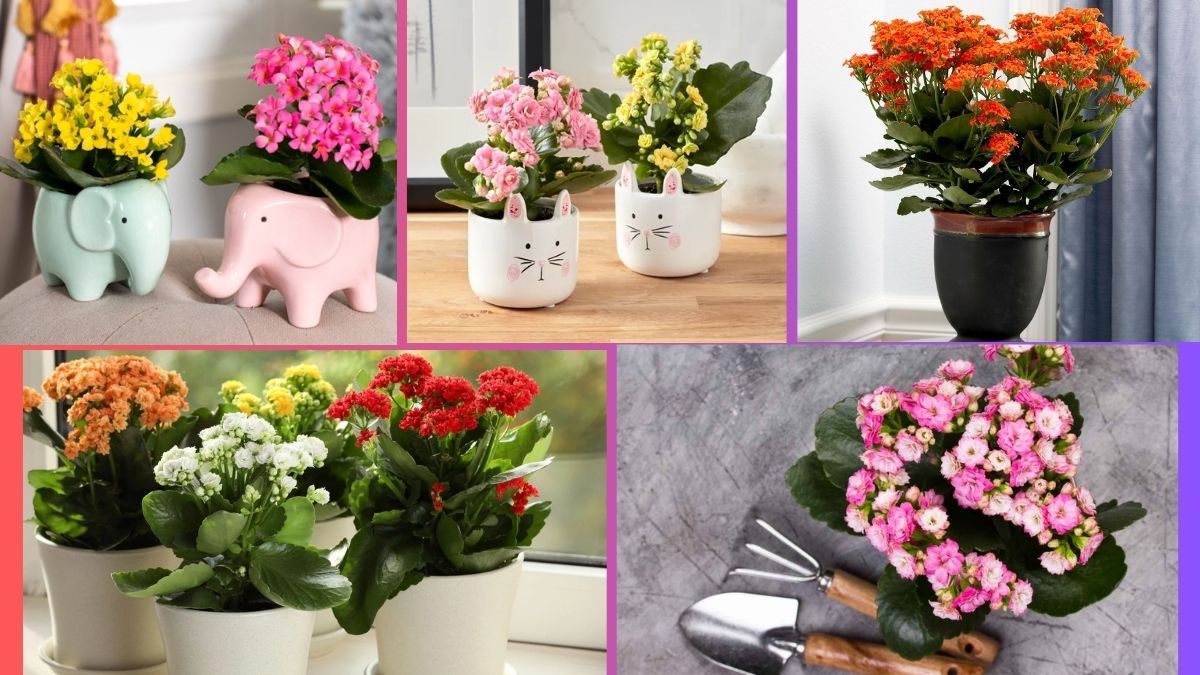





Leave A Comment